
It seems like I’ve heard about Lynchburg, Tennessee forever. I can thank the Jack Daniels advertising department for that. To the casual observer, there’s not much to Lynchburg; basically a single block of shops and restaurants. But what is there is attractive and the surroundings are classic southern

It seems like I’ve heard about Lynchburg, Tennessee forever. I can thank the Jack Daniels advertising department for that.
To the casual observer, there’s not much to Lynchburg; basically a single block of shops and restaurants. But what is there is attractive and the surroundings are classic southern rolling hills. The economic engine is the Jack Daniels distillery. We stopped to take the tour and, well, do a little sampling.
Whatever you think about whiskey in general or Jack Daniels in particular, the company is an example of how business and community should work together to the benefit of both. We were told that many employees are the third, fourth, fifth generation of their family to work for the distillery. More, two extended families account for the majority of the workforce. During the pandemic downturn, the company made sure that no one missed a paycheck. This commitment extended to the town as well, where payrolls and other expenses were subsidized as necessary.
The company prides itself on being a zero-waste operation. This is different than being carbon neutral or whatever. It means that nothing is thrown out. For example, Jack Daniels only uses each oak barrel once, but then they are sold to other distilleries or breweries. Those left unused are either turned into planters or the wood is reused for other purposes. Other wood is burned to make charcoal, which is used as a filtering agent in the whiskey-making process. It, too, has several subsequent uses. This all adds up to reuse more than recycling, which is better.
Let’s take a quick look around, shall we?
Here’s Jack. A dapper dresser, about five feet tall.
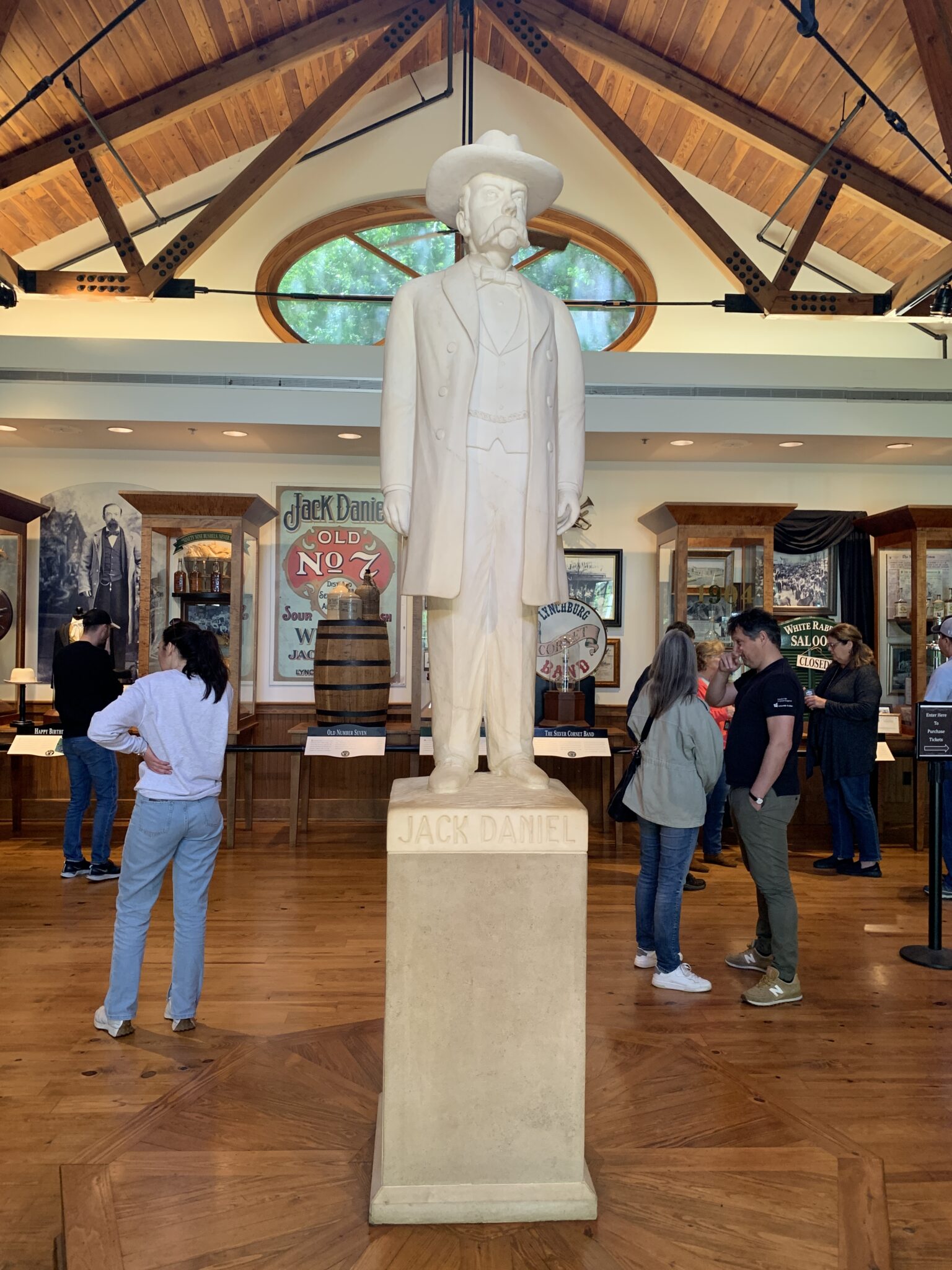
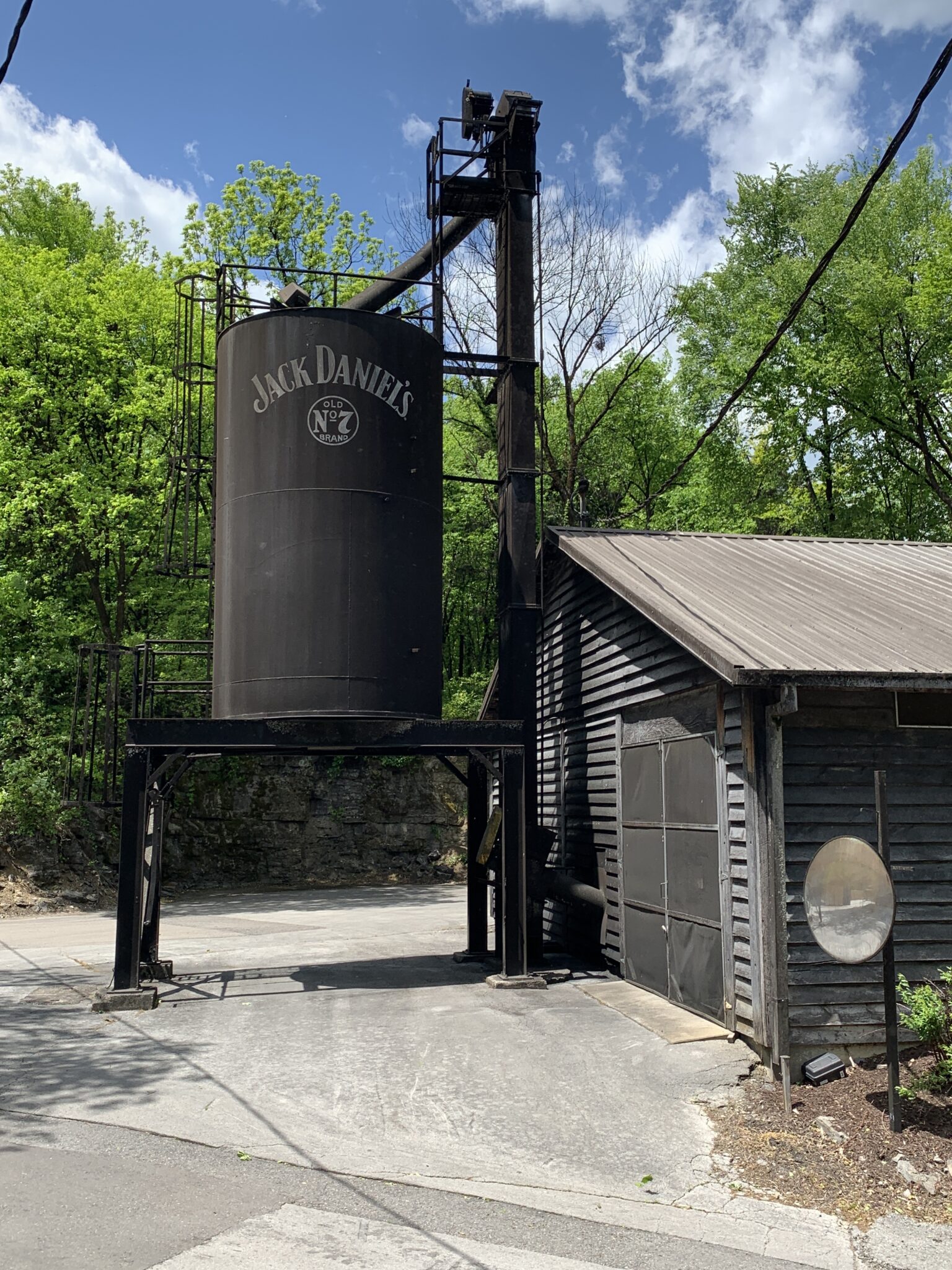
Wood destined to become charcoal. A modern process ensures minimal pollution.

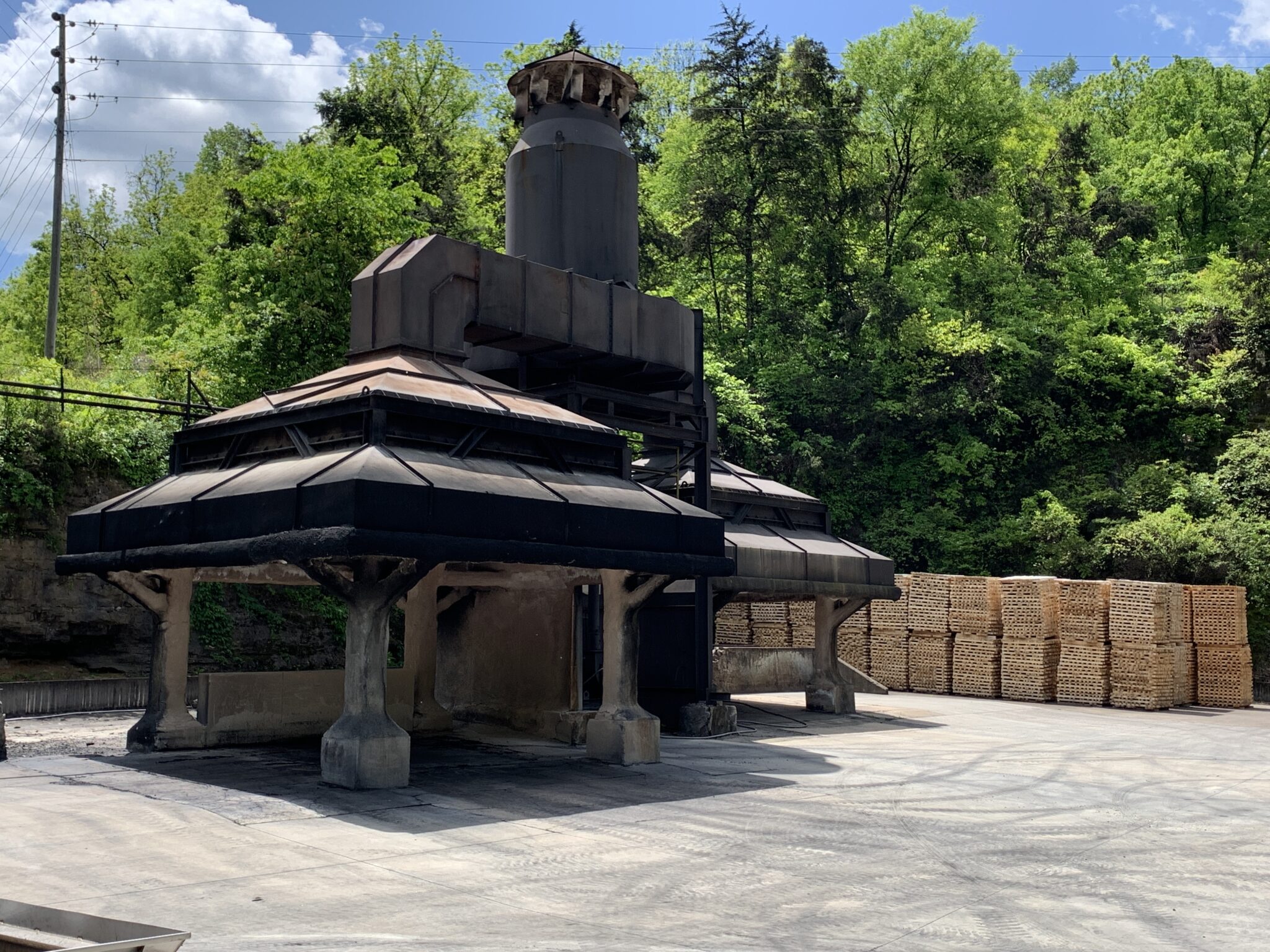
A by-product from the distillery is what some call “white lightning”, very strong, very rough alcohol. We had a chance to rub a little on our hands. Even that can produce a buzz when it makes its way into the bloodstream.
Besides amusing visitors, it’s used to start fires for making charcoal. Another example of reuse.

This is the source of the much-touted Jack Daniels spring water. Jack’s original still was perched on the rock ledge above the small waterfall.
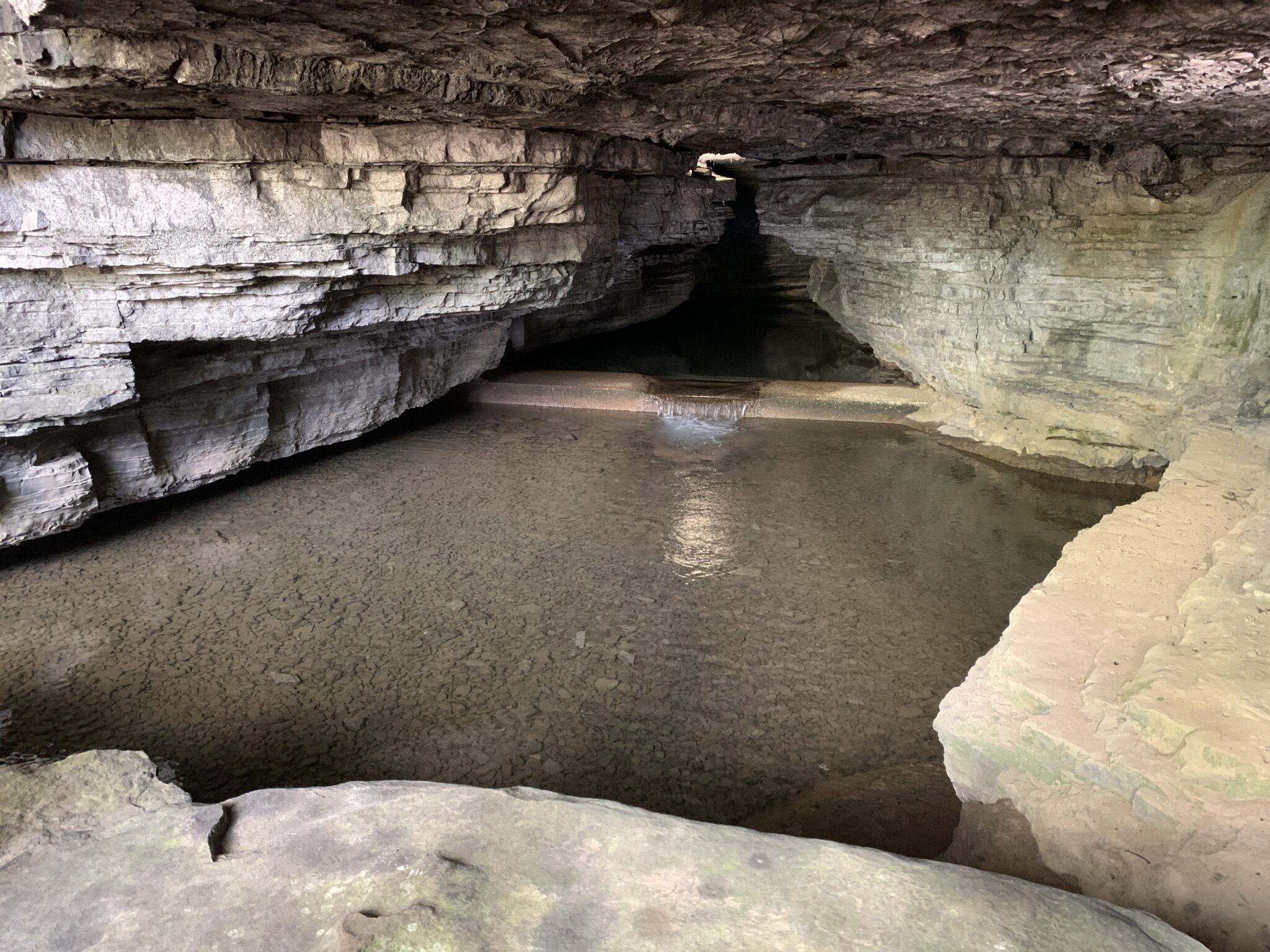
Here’s where whiskey is made. Sorry, no photos inside the building.
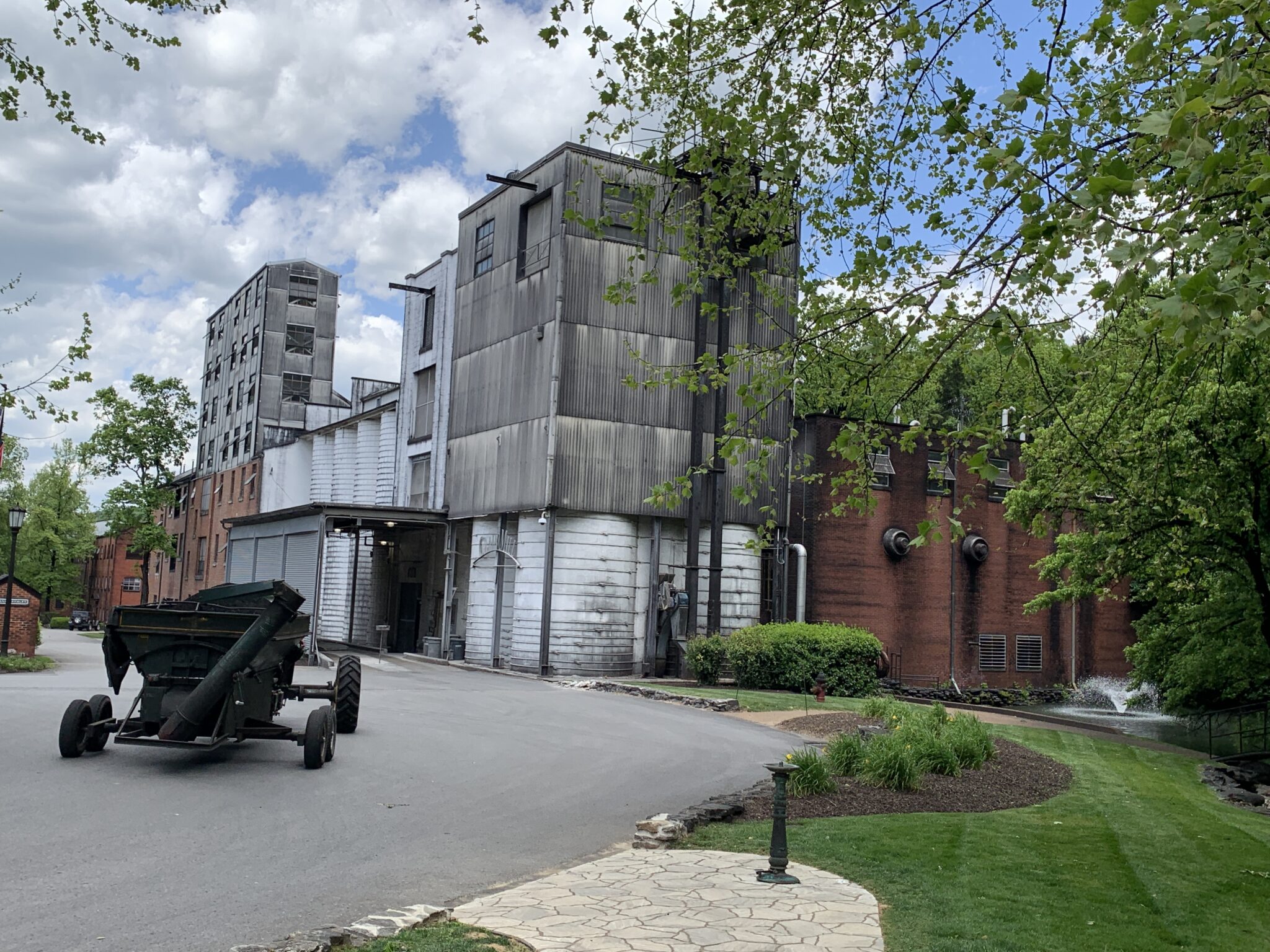
We exit the building, sworn never to reveal its dark secrets. (Not really)
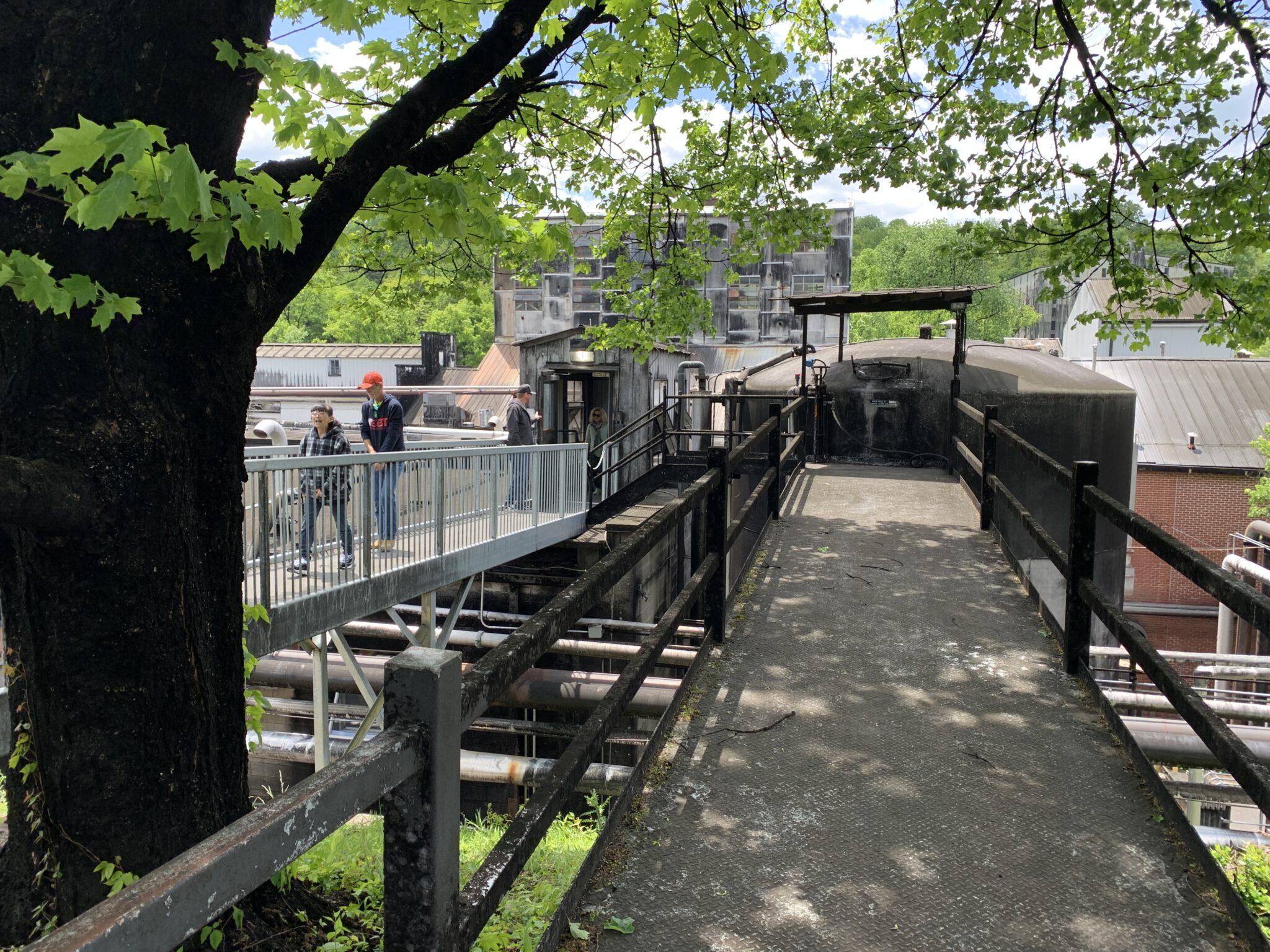
A lot of liquid moves from place to place at Jack Daniels. I like taking photos of pipes and tanks.
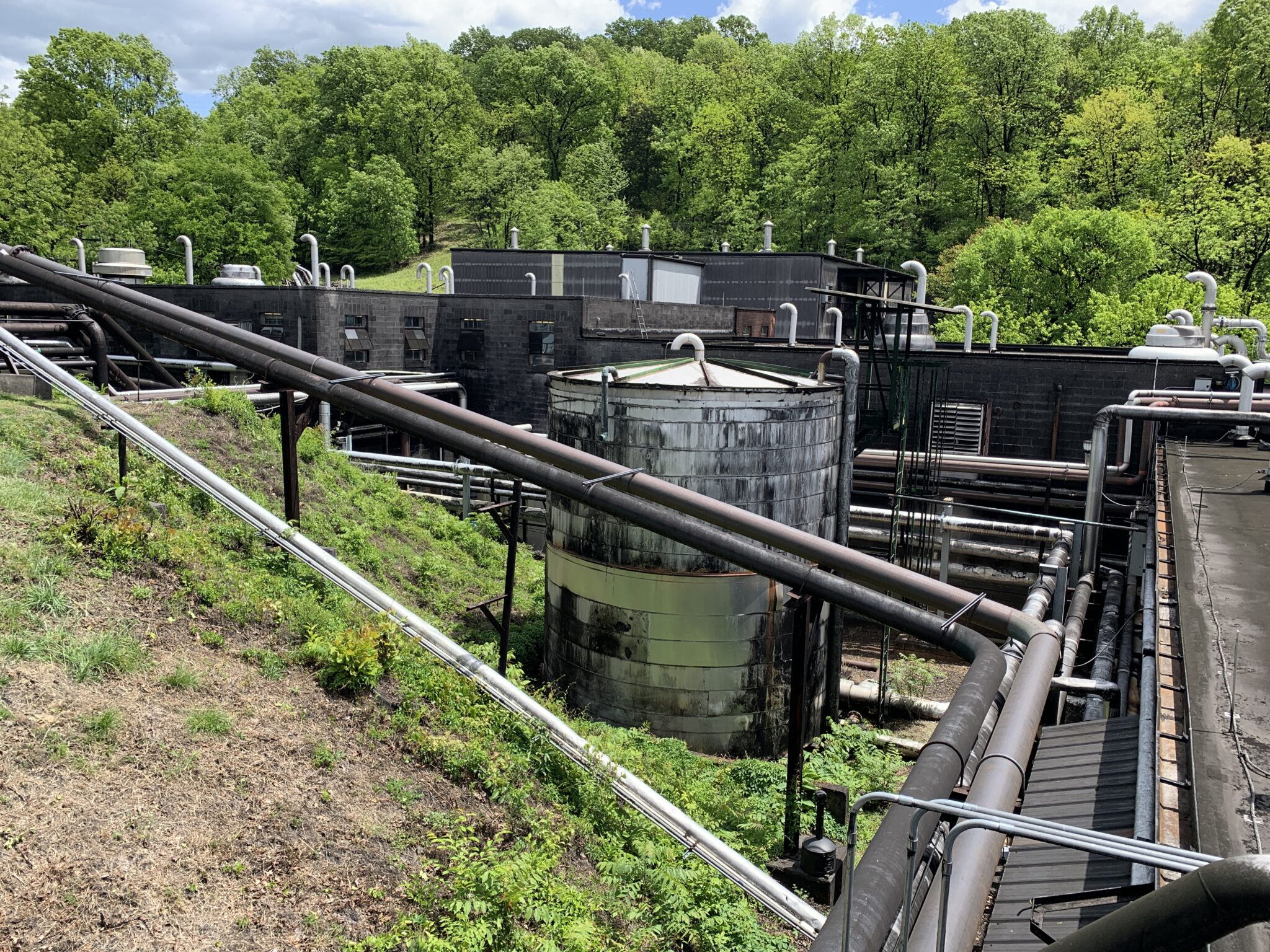
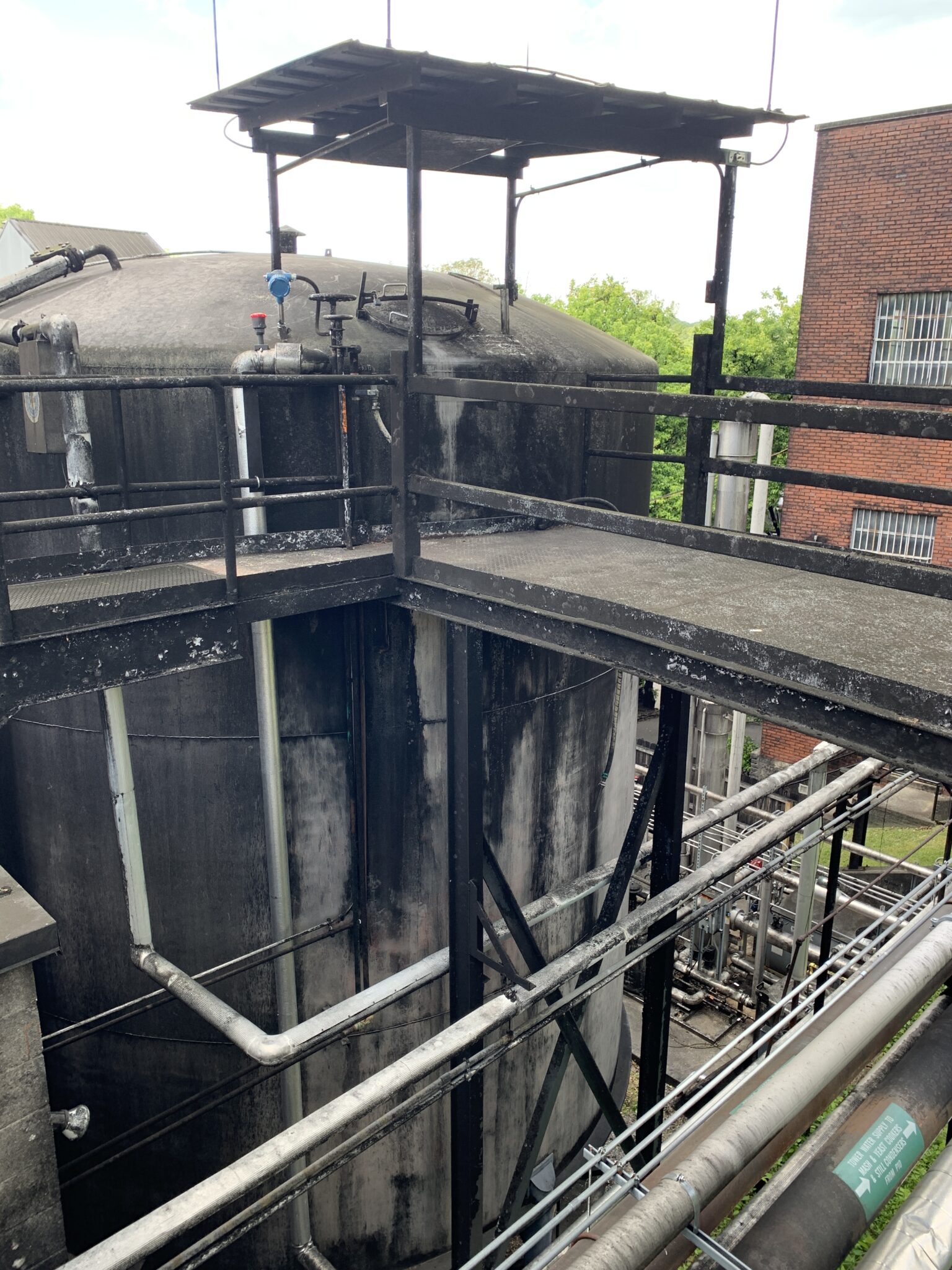

I hope the bottlers are well-paid because their job looks pretty boring.
They’re processing three-liter bottles served on cruise ships and the like.
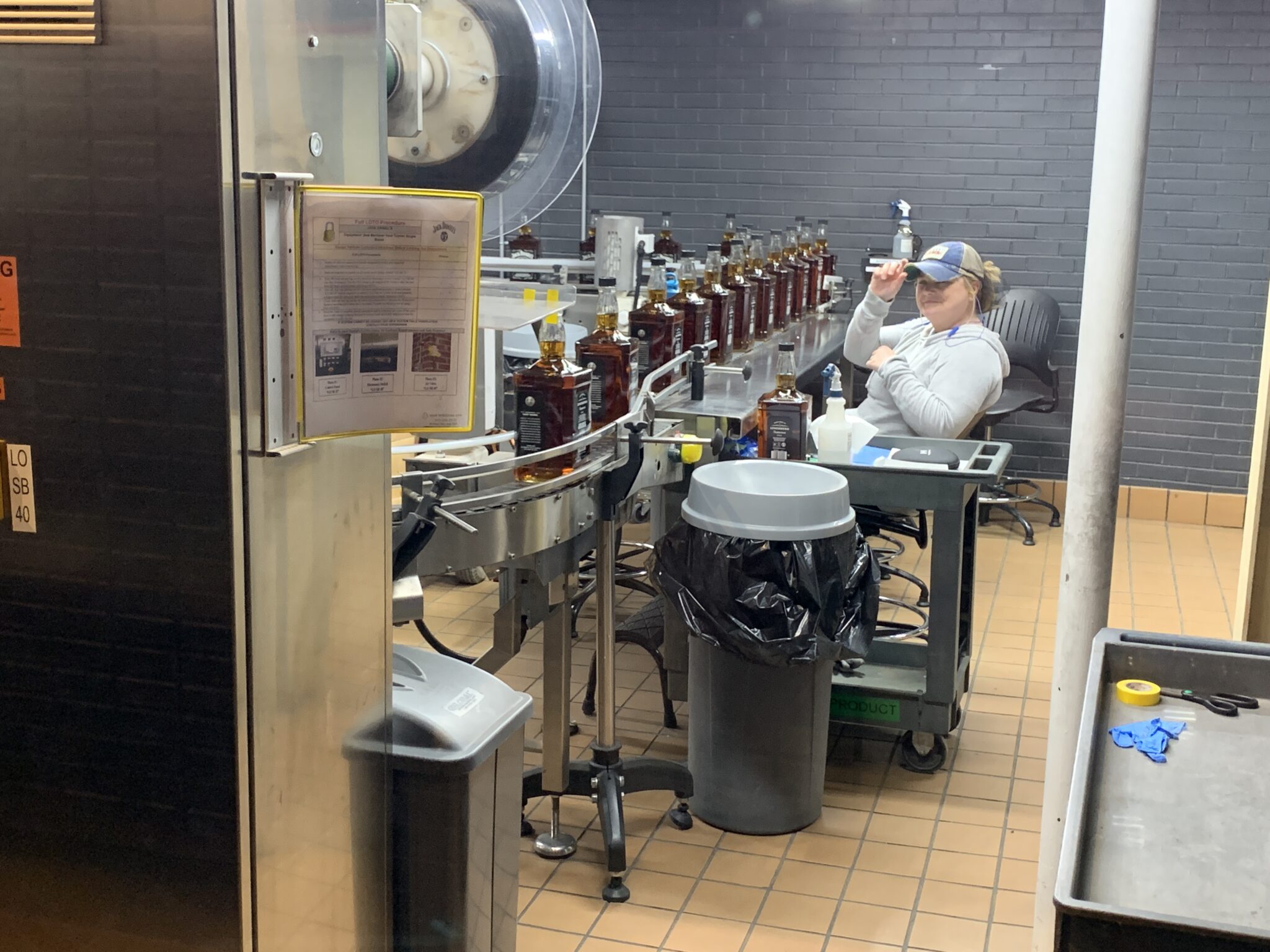
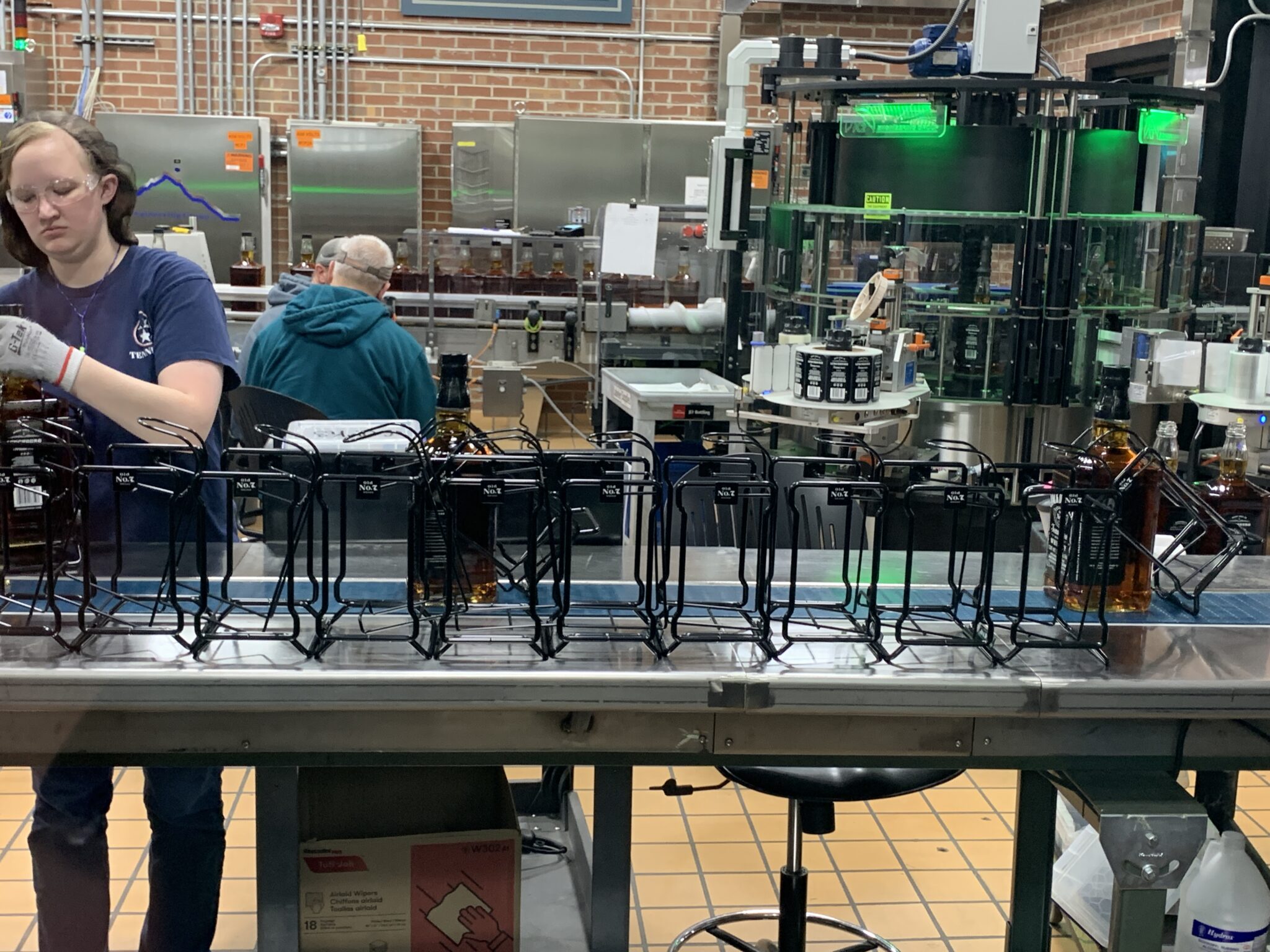
Our friendly and very knowledgeable tour guide – who sounds a lot like Ted Lasso – describes the products we are about to taste; how to prepare the palate, and so on. We spent an extra five bucks to have the single-barrel tastings.
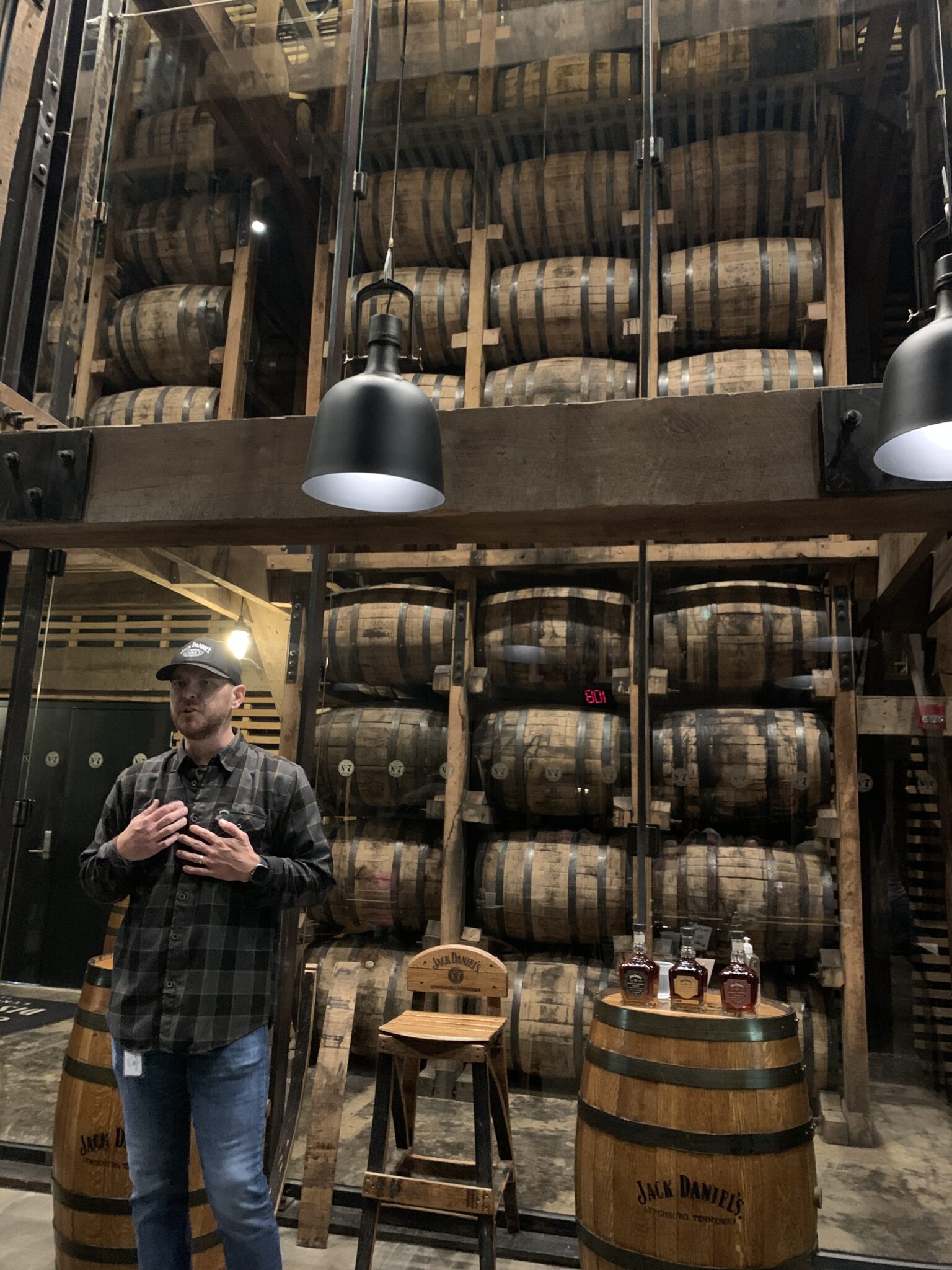

Enough to taste, not enough to get you arrested when you hit the freeway to Nashville afterwards.

